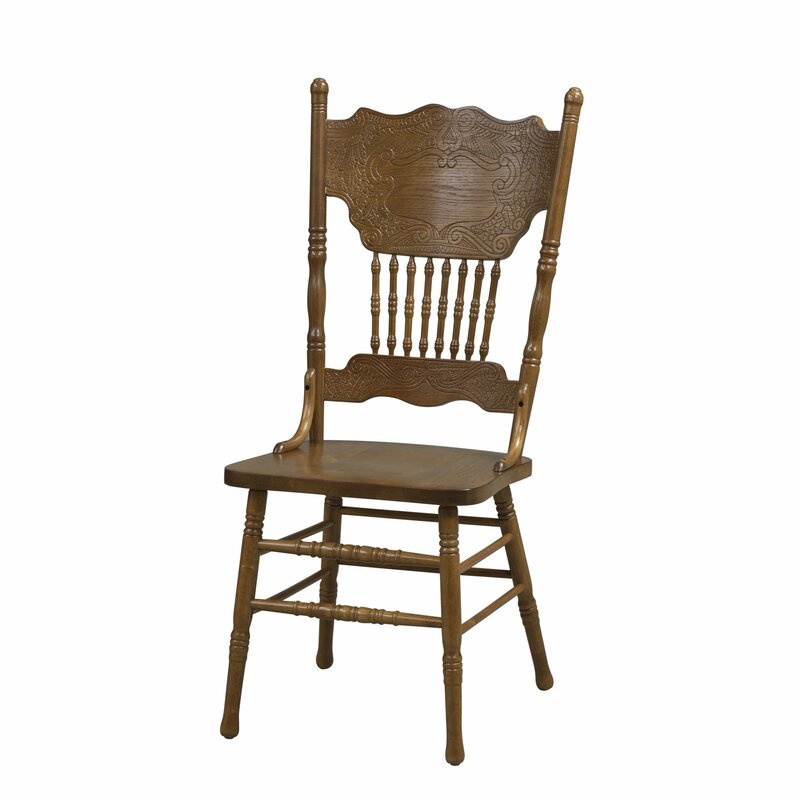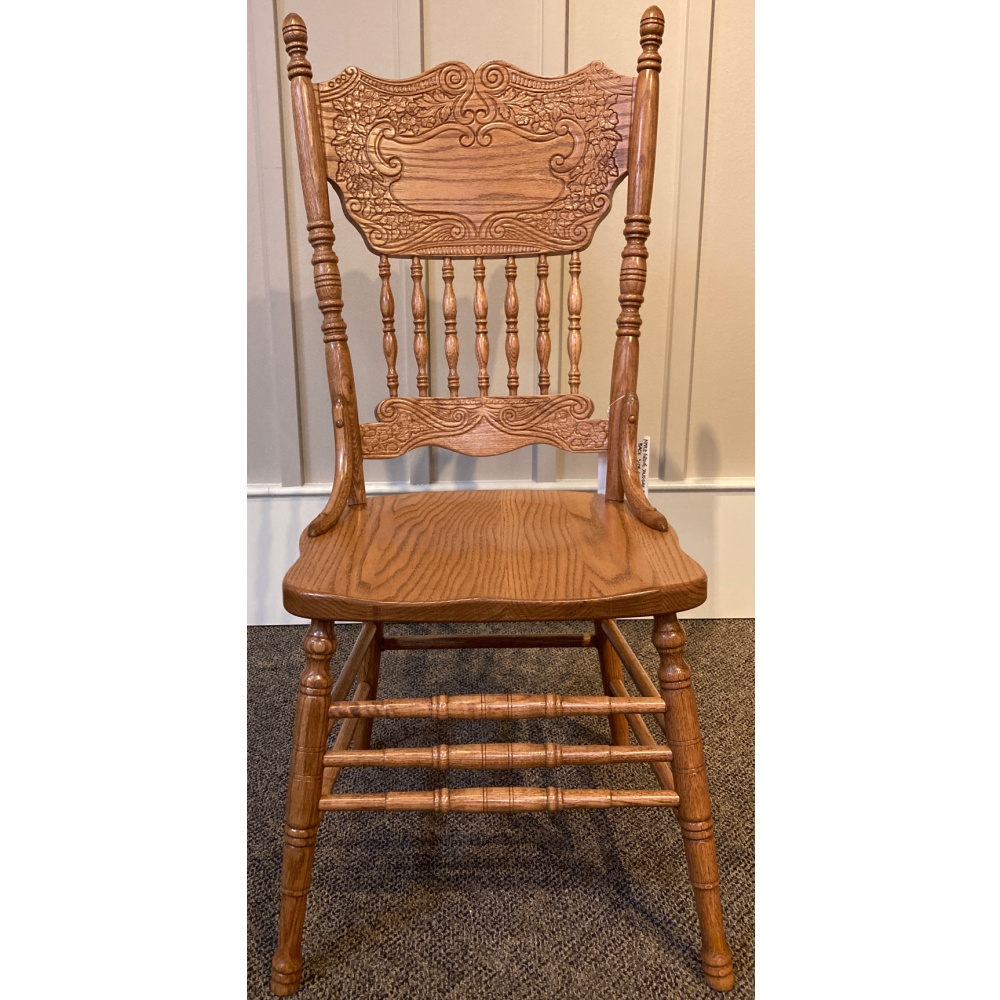History and Design of the Acadian Double Press Backside Chair: Acadian Double Press Back Side Chair

The Acadian double press backside chair, a distinctive piece of furniture, embodies the rich cultural heritage and craftsmanship of the Acadian people. Its origins can be traced back to the 18th century, when Acadian communities in what is now eastern Canada and the United States began to develop their own unique furniture styles. This chair’s design, rooted in practical necessity and influenced by European traditions, has evolved over time, reflecting the changing needs and artistic sensibilities of its creators.
Origins and Historical Context
The Acadian double press backside chair emerged within the context of the Acadian diaspora. Following the expulsion of the Acadians from their homeland in Nova Scotia in the mid-18th century, many Acadians sought refuge in other parts of North America, including Louisiana, Maine, and New Brunswick. This displacement led to a period of cultural adaptation and innovation, as Acadian communities established new lives and traditions in unfamiliar environments. The chair’s design reflects this adaptation, incorporating both traditional European elements and new influences from their adopted homelands.
Design Elements
The Acadian double press backside chair is characterized by its distinctive design elements:
- Double-Press Backside: The chair’s back is constructed using a technique known as “double pressing,” in which two pieces of wood are joined together to form a single, sturdy back. This technique, common in Acadian furniture making, allowed for the creation of a strong and durable back while minimizing the use of materials.
- Simple, Functional Design: The chair’s overall design is simple and functional, with a focus on practicality and durability. Its straight lines and unadorned surfaces reflect the emphasis on utility and resourcefulness that characterized Acadian life.
- Turned Legs: The chair’s legs are typically turned, adding a touch of decorative detail while maintaining the chair’s overall simplicity. The turned legs often feature a distinctive “ball-and-claw” design, which is characteristic of Acadian furniture.
- Seat: The chair’s seat is typically made of wood or woven rush, providing a comfortable and durable surface.
Variations and Regional Differences, Acadian double press back side chair
The design of the Acadian double press backside chair has evolved over time, with variations emerging across different regions and periods. Some common variations include:
- Back Shape: The shape of the chair’s back can vary, with some chairs featuring a slightly curved back while others have a more straight back.
- Armrests: Some chairs feature armrests, while others do not. The presence or absence of armrests often reflects the chair’s intended use.
- Decoration: The level of decoration on the chair can also vary. Some chairs are completely unadorned, while others feature simple carvings or painted designs.
Timeline of Key Developments and Influences
The evolution of the Acadian double press backside chair can be traced through a series of key developments and influences:
- 18th Century: The origins of the chair can be traced back to the 18th century, when Acadian communities began to develop their own unique furniture styles. The chair’s design was likely influenced by European furniture traditions, such as the “X-frame” chair.
- 19th Century: During the 19th century, the Acadian double press backside chair became increasingly popular, as Acadian communities continued to grow and develop. The chair’s design continued to evolve, with variations emerging across different regions.
- 20th Century: In the 20th century, the Acadian double press backside chair was recognized as a significant part of Acadian cultural heritage. The chair’s popularity declined as mass-produced furniture became more readily available. However, the chair continued to be made by traditional craftspeople, and its design has inspired contemporary furniture makers.
Construction and Materials of the Acadian Double Press Backside Chair

The Acadian Double Press Backside Chair is a testament to the craftsmanship and resourcefulness of the Acadian people. Its construction reflects a deep understanding of woodworking techniques and the use of readily available materials. This section delves into the traditional methods and materials used to create this iconic piece of furniture.
Traditional Construction Techniques
The construction of the Acadian Double Press Backside Chair is characterized by its meticulous attention to detail and the use of traditional woodworking techniques. These techniques, passed down through generations of Acadian artisans, ensured the chair’s durability and aesthetic appeal.
- Mortise and Tenon Joinery: This traditional joinery method is employed to connect the chair’s legs, rails, and back supports. The mortise, a rectangular hole, is cut into one piece of wood, while the tenon, a projecting peg, is shaped on the other. The tenon fits snugly into the mortise, creating a strong and durable joint.
- Dovetail Joinery: Dovetail joints are used to join the chair’s seat rails to the legs. These interlocking joints, resembling the tails of a dove, provide exceptional strength and prevent the chair from coming apart.
- Hand-Planing: The chair’s surfaces are meticulously smoothed using hand planes, resulting in a smooth and consistent finish. Hand-planing allows for precise control and creates a unique texture that is characteristic of handcrafted furniture.
- Hand-Carving: The chair’s back often features intricate carvings, adding a decorative touch and showcasing the artisan’s skill. These carvings, typically geometric patterns or floral motifs, are meticulously executed by hand, reflecting the artistry and craftsmanship of the Acadian tradition.
Materials
The Acadian Double Press Backside Chair is primarily constructed from locally sourced hardwoods, reflecting the region’s abundant natural resources.
- Wood Types: The most commonly used woods for the chair include maple, oak, and birch. These hardwoods are known for their strength, durability, and ability to hold intricate carvings.
- Joints and Fasteners: Traditional joinery methods, such as mortise and tenon and dovetail joints, are used to connect the chair’s components. Wooden pegs, known as dowels, are also used to reinforce joints and provide additional stability.
- Finishes: The chair is typically finished with natural oils or waxes, highlighting the wood’s grain and providing a protective coating. These finishes enhance the chair’s durability and preserve its natural beauty.
The “Double Press” Technique
The “double press” technique is a defining feature of the Acadian Double Press Backside Chair, shaping the chair’s distinctive back.
The “double press” technique involves bending a single piece of wood into a curved shape, creating a strong and resilient back.
- Steam Bending: The wood is first steamed to soften its fibers, making it pliable and easier to bend. This process is crucial for achieving the desired curve without breaking the wood.
- Pressing: The softened wood is then placed in a specially designed press, where it is carefully bent and held in place until it cools and sets. The “double press” refers to the use of two presses, one for each side of the back, ensuring a symmetrical and balanced curve.
- Finishing: Once the back is shaped, it is attached to the chair’s frame using mortise and tenon joinery. The back is then smoothed and finished, completing the construction of the chair.
Cultural Significance and Use of the Acadian Double Press Backside Chair

The Acadian Double Press Backside Chair holds a profound cultural significance within Acadian communities, serving as a testament to their heritage, craftsmanship, and enduring traditions. This humble yet sturdy piece of furniture has been an integral part of Acadian life for generations, reflecting their values and way of life.
Role of the Chair in Acadian Homes
The Acadian Double Press Backside Chair played a multifaceted role in traditional Acadian homes, embodying practicality and functionality. These chairs were often found in every room, serving as seating for daily activities, including meals, storytelling, and family gatherings. Their sturdy construction and simple design ensured durability and adaptability, making them suitable for a variety of purposes.
- Dining: The chairs were used for dining, providing comfortable seating for family meals. Their height and stability ensured a comfortable posture for long meals.
- Storytelling: The chairs served as gathering points for storytelling sessions, where family members and neighbors would gather to share stories, songs, and traditions.
- Social Gatherings: The chairs were essential for social gatherings, providing seating for guests during festivals, weddings, and other community events.
Role of the Chair in Acadian Workplaces
Beyond their domestic use, the chairs were also employed in various workplaces, highlighting their adaptability and practicality.
- Farming: The chairs provided a stable and comfortable seating option for farmers during long hours of labor, offering respite during breaks or while tending to crops.
- Craftsmanship: The chairs were often used by artisans and craftspeople, providing a stable and comfortable seating option while working on their crafts.
- Workshops: The chairs were commonly found in workshops, providing seating for workers during various tasks.
Symbolic Meanings Associated with the Chair
The Acadian Double Press Backside Chair holds symbolic meanings that reflect the values and traditions of Acadian culture.
- Family and Community: The chairs were often passed down through generations, representing the enduring bonds of family and community.
- Heritage and Identity: The chairs embody the rich heritage and cultural identity of the Acadian people, serving as a tangible connection to their past.
- Resilience and Strength: The sturdy construction and enduring nature of the chairs symbolize the resilience and strength of the Acadian people, who have faced numerous challenges throughout their history.
Contemporary Use and Appreciation of the Chair
The Acadian Double Press Backside Chair continues to be used and appreciated in modern times, reflecting its enduring legacy and cultural significance.
- Decorative Element: The chairs are often used as decorative elements in homes, adding a touch of traditional charm and cultural heritage.
- Museum Exhibits: The chairs are featured in museums and historical societies, showcasing the craftsmanship and cultural heritage of the Acadian people.
- Contemporary Design: Contemporary designers have incorporated elements of the chair’s design into modern furniture, paying homage to its enduring legacy.
The Acadian double press back side chair, with its intricate woven back and sturdy construction, exemplifies the craftsmanship of the region. While its origins lie in practicality, its aesthetic appeal has resonated throughout history, inspiring similar designs like the yellow wing back chair , which embodies a more refined and luxurious style.
The Acadian double press back side chair, however, retains its rustic charm and enduring practicality, making it a timeless piece for any home.
The Acadian Double Press Back Side Chair is known for its sturdy construction and classic design. While its primary function is to provide comfortable seating, it’s important to consider the impact of posture on overall well-being. If you experience upper back pain, investing in a chair designed to support proper posture, such as those listed in this guide on chair for upper back pain , could complement the comfort of the Acadian Double Press Back Side Chair.
By prioritizing ergonomic seating, you can maintain a healthy posture while enjoying the aesthetic appeal of this timeless chair.